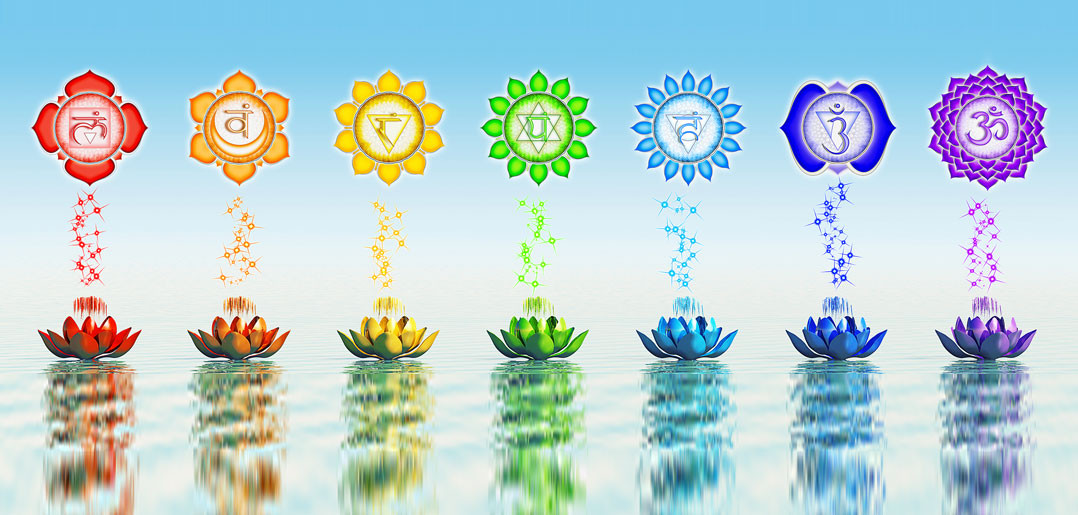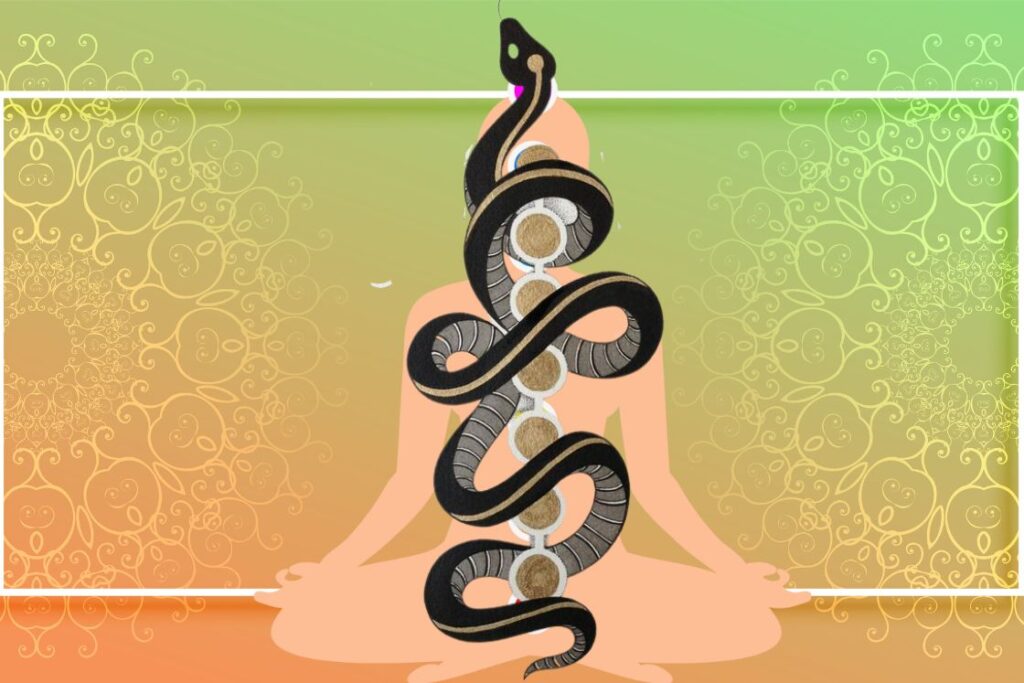Kundalini Yoga is a form of yoga that focuses on awakening the dormant energy within the body and mind. It is believed that this energy, called Kundalini, resides at the base of the spine and can be activated through the practice of specific techniques and meditations. The history of Kundalini Yoga in India dates back thousands of years and is deeply rooted in Indian spiritual traditions.
The earliest references to Kundalini can be found in the Upanishads, which are ancient texts that form the foundation of Hindu philosophy. These texts describe Kundalini as a powerful force that can lead to spiritual awakening and liberation. Over time, the practices and techniques associated with Kundalini Yoga were developed and refined by various Indian spiritual traditions, including Tantra, Hatha Yoga, and Sikhism.
History of Kundalini Yoga in Ancient Shiva Sutra, Vedas in Hinduism
the Vedas contain many references to the concept of prana, which is the vital energy that is believed to flow through all living beings, and is closely related to the Kundalini energy in Kundalini Yoga.
In the Rigveda, the oldest of the Vedas, there are hymns that describe the “one life force” that flows through all beings. This life force is referred to as “prana,” and it is believed to be the source of all energy and vitality. The Rigveda also mentions the concept of “vayu,” which is the breath that carries prana throughout the body.
The Upanishads, which were written later than the Vedas, contain references to the Kundalini energy, which is closely related to prana. The Mundaka Upanishad, for example, describes the Kundalini as a coiled serpent that lies at the base of the spine and can be awakened through the practice of yoga.
The Vedas also describe the practice of yoga, which is closely related to Kundalini Yoga. The term “yoga” is derived from the Sanskrit word “yuj,” which means to yoke or unite. In the Vedas, yoga is described as a means of achieving union with the divine or higher consciousness.
The Atharvaveda, one of the four Vedas, contains hymns that describe various aspects of yoga, including meditation, pranayama, and asanas. The hymns describe the practice of yoga as a means of purifying the body and mind, and achieving spiritual realization.
While Kundalini Yoga is not explicitly mentioned in the Vedas, the concepts of prana, yoga, and spiritual realization are all closely related to the practice of Kundalini Yoga. The teachings of the Vedas have inspired the development of various schools of yoga, including Kundalini Yoga, and continue to be an important part of Hindu spirituality and philosophy.
The origins of Kundalini Yoga can be traced back to the ancient Hindu Upanishads, which form the basis of Hindu philosophy and spirituality. The Upanishads are a collection of texts that were written between 800 BCE to 500 BCE and are considered to be the foundation of Hinduism. The Upanishads describe Kundalini as a powerful force that lies dormant at the base of the spine and can be awakened through the practice of yoga.
In the Upanishads, Kundalini is described as a coiled serpent that resides at the base of the spine. When awakened, it rises up through the chakras, or energy centers, of the body, leading to a state of higher consciousness and spiritual realization. The Upanishads describe the Kundalini energy as the source of all life and the ultimate reality that underlies the entire universe.
Kundalini Yoga has a deep connection to the worship of Lord Shiva, one of the most important deities in Hinduism. The history of Kundalini Yoga in the context of Shiva can be traced through several important texts, including the Shiv Sutras, the Shiv Purana.
The Shiv Sutras is a text attributed to Lord Shiva himself, The text contains a series of aphorisms that describe the nature of the divine and the path to spiritual realization. The Shiv Sutras place a strong emphasis on the practice of Kundalini Yoga, and describe the Kundalini energy as the divine power that resides within every human being.
The Shiv Purana, also contains references to Kundalini Yoga. The Purana describes Lord Shiva as the supreme yogi, and teaches that the practice of yoga is the key to achieving spiritual liberation. The Purana also describes the Kundalini energy as a powerful force that can be awakened through the practice of yoga, leading to a state of higher consciousness and spiritual realization.
The practice of Kundalini Yoga in the context of Lord Shiva is closely related to the concept of shakti, or divine feminine energy. Lord Shiva is often depicted as holding a serpent, which is a symbol of the Kundalini energy, and is believed to be the embodiment of both masculine and feminine energies. The awakening of the Kundalini energy is seen as a means of uniting these energies and achieving a state of balance and harmony. The text describes a variety of yoga practices, including Hatha Yoga and Kundalini Yoga, and teaches that the ultimate goal of yoga is to achieve union with Lord Shiva.
These texts place a strong emphasis on the practice of Kundalini Yoga as a means of achieving spiritual realization and union with the divine, and continue to inspire practitioners of Kundalini Yoga around the world.
History of Kundalini Yoga in Upanishads of Hinduism
The practice of Kundalini Yoga is mentioned in several Upanishads, including the Maitri, Shvetashvatara, and Yoga Kundalini Upanishads. These texts describe various techniques for awakening the Kundalini energy, including breathing exercises (pranayama), meditation, and chanting of mantras.
The Maitri Upanishad, for example, describes the Kundalini as a “golden sheath” that covers the soul and can be pierced through the practice of yoga. The text describes the Kundalini energy as the “source of all strength and wisdom” and explains that it can be awakened through various practices, including the chanting of mantras and visualization techniques.
Similarly, the Shvetashvatara Upanishad describes the Kundalini energy as the “ultimate power” and explains that it can be awakened through the practice of yoga and meditation. The text describes the Kundalini energy as the “supreme consciousness” that can lead to spiritual liberation and enlightenment.
The Yoga Kundalini Upanishad is entirely dedicated to the practice of Kundalini Yoga and provides detailed instructions on how to awaken the Kundalini energy. The text describes various techniques for activating the Kundalini energy, including specific postures (asanas), breathing techniques (pranayama), and visualization exercises.
In conclusion, the Hindu Upanishads provide the earliest written records of Kundalini Yoga and describe the Kundalini energy as a powerful force that can be awakened through the practice of yoga. The Upanishads lay the foundation for the practice of Kundalini Yoga, which continues to be an integral part of Hindu spiritual traditions to this day. The teachings of the Upanishads have been passed down through generations of yogis and continue to inspire practitioners of Kundalini Yoga around the world.
History of Kundalini Yoga in Kashmir Shaivism tradition of Hinduism
The history of Kundalini Yoga indeed suggests that its origins can be traced back to the Kashmir Shaivism tradition of Hinduism, which originated in the 8th century CE in the Kashmir region of India. This school of Hindu philosophy emphasized the role of the individual’s spiritual experience in achieving liberation, as opposed to strict adherence to religious rituals and texts.
Kundalini Yoga, as a practice, is believed to have developed from the Kashmir Shaivism tradition’s emphasis on awakening the dormant energy (Kundalini) that lies within the human body. The practice of Kundalini Yoga involves a combination of physical postures (asanas), breathing techniques (pranayama), meditation, and chanting of mantras, all aimed at awakening the Kundalini energy and directing it upwards through the chakras, or energy centers, of the body.
While Kundalini Yoga has existed for thousands of years, its teachings were indeed kept restricted and maintained as a secret oral tradition in India. This secrecy was to protect the practice from being misused or abused and to ensure that it was only taught to sincere and dedicated students who were ready to receive its teachings. The secrecy, however, also created an image of mystery around the practice, which sometimes made it difficult for people to access and understand.
History of Kundalini Yoga in Nath’s Yogi, Gorakhnath, Siddha yogi tradition
Kundalini Yoga has a strong connection to the Nath’s Yogi tradition, which traces its origins to the legendary guru, Gorakhnath. The Nath tradition is a spiritual lineage that has been passed down from teacher to student for centuries and is known for its emphasis on physical and spiritual practices, including Hatha Yoga, pranayama, and Kundalini Yoga.
Gorakhnath is considered to be the founder of the Nath tradition and is believed to have lived in India during the 9th century. According to legend, Gorakhnath was a disciple of the great guru, Matsyendranath, who is also considered to be the founder of the Nath tradition. Gorakhnath is said to have achieved enlightenment through the practice of Kundalini Yoga, and he is regarded as a powerful and influential figure in Indian spirituality.
The Nath tradition emphasizes the practice of Kundalini Yoga as a means of achieving spiritual realization and liberation. The Nath yogis believe that the Kundalini energy lies dormant at the base of the spine and can be awakened through the practice of yoga and meditation. Once awakened, the Kundalini energy rises up through the chakras, leading to a state of higher consciousness and spiritual awakening.
The Nath tradition also places a strong emphasis on the physical practices of yoga, including Hatha Yoga and pranayama. The Nath yogis believe that the body must be purified and strengthened in order to support the awakening of the Kundalini energy. The practice of Hatha Yoga and pranayama is considered essential for preparing the body and mind for the intense energy that is unleashed through the awakening of the Kundalini.
The Siddha yogi tradition, which is closely related to the Nath tradition, also places a strong emphasis on the practice of Kundalini Yoga. The Siddha yogis believe that the Kundalini energy is the key to unlocking the full potential of the human body and mind, and that the awakening of this energy is the ultimate goal of spiritual practice.
In conclusion, Kundalini Yoga has a rich history in the Nath’s Yogi tradition, which is a spiritual lineage that traces its origins to the legendary guru, Gorakhnath. The Nath yogis and Siddha yogis have long emphasized the practice of Kundalini Yoga as a means of achieving spiritual realization and liberation, and their teachings continue to inspire practitioners of Kundalini Yoga around the world.
History of Kundalini Yoga in the 20th century
It was only in the 20th century, with the arrival of Yogi Bhajan in the West, that Kundalini Yoga began to be taught openly and widely. Bhajan, as mentioned earlier, introduced Kundalini Yoga to the United States and founded the 3HO Foundation to promote its practice. Since then, Kundalini Yoga has gained popularity all over the world and has been adapted and integrated into many Western yoga practices.
Overall, the history of Kundalini Yoga demonstrates its deep roots in Indian spiritual traditions and the Kashmir Shaivism school of Hinduism. Its secretive origins were meant to protect its teachings, but its modern popularity has made it more accessible and widely practiced. Kundalini Yoga remains a powerful tool for spiritual awakening, manifestation, and liberation for those who are ready to delve into its teachings and practices.
One of the most influential figures in the modern history of Kundalini Yoga is Yogi Bhajan, who brought the practice to the United States in the late 1960s. Bhajan was born in India in 1929 and grew up in a Sikh family. He was trained in Kundalini Yoga and other spiritual practices by his teacher, Sant Hazara Singh. In 1968, Bhajan moved to the United States and began teaching Kundalini Yoga to students in Los Angeles.
Bhajan’s teachings attracted a large following, and he established the 3HO Foundation (Healthy, Happy, Holy Organization) to promote Kundalini Yoga and other aspects of Sikh culture. The organization grew rapidly and established centers throughout the United States and around the world. Today, Kundalini Yoga is practiced by millions of people worldwide and has become a popular form of yoga in the West.
Despite its growing popularity, Kundalini Yoga remains deeply connected to its Indian roots. Many of the mantras, chants, and practices used in Kundalini Yoga have their origins in Indian spiritual traditions. The practice of Kundalini Yoga continues to evolve and adapt to the changing needs of practitioners, but its underlying principles and teachings remain firmly grounded in the rich spiritual traditions of India.






